|
|
Symbols of the Gay, Lesbian, Bisexual, and Transgender Movements |
The lambda One symbol which continues to remain popular is the lower case Greek letter lambda. The symbol was originally chosen by the Gay Activists Alliance of New York in 1970. The GAA was a group which broke away from the larger Gay Liberation Front at the end of 1969, only six months after it's foundation in response to the Stonewall Riots. While the GLF wanted to work side by side with the black and women's liberation movements to gain unity and acceptance, the GAA wanted to focus their efforts more concisely on only Gay and Lesbian issues. Because of its official adoption by the GAA, which sponsored public events for the gay community, the lambda soon became a quick way for the members of the gay community to identify each other. The reasoning was that the lambda would easily be mistaken for a college fraternity symbol and ignored by the majority of the population. Eventually though, the GAA headquarters was torched by an arsonist, destroying not only the building but all of the organization's records, and the movement never recovered from the loss. The symbol, however, lived on. Now what the symbol means or meant when it was introduced are a prime topic for speculation and a morass of public rumoring. Some of the more popular rumors are:
There is no actual evidence though that the lambda was ever associated with this group. However, there was Hollywood movie in the 1962s called The 300 Spartans starring Diane Baker, Richard Egan, and Ralph Richardson that showed Spartan warriors who appeared to have lambdas on their shields. Whatever the lambda meant or means today, it's everywhere. Even though at one time it acquired a strictly male connotation, it is used by both gays and lesbians today. Back in December of 1974, the lambda was officially declared the international symbol for gay and lesbian rights by the International Gay Rights Congress in Edinburgh, Scotland.
The rainbow flag has become one of the most widely used and recognized symbols of the gay pride movement. The concept of the rainbow is hardly a new one. Rainbows have used since ancient times in all kinds of cultures- Greek, African, Native American and Celtic, to name only a few. Even Jesse Jackson's Rainbow Coalition has made use of the rainbow has a freedom symbol. The Rainbow Flag as we know it today was developed by San Francisco artist Gilbert Baker in 1978. At the time, there was a need for a gay symbol which could be used year after year for the San Francisco Gay and Lesbian Pride Parade. Baker took inspiration from many sources, from the hippies movement to the black civil rights movement, and came up with a flag with eight stripes. Color has always played an important power in the gay right movement- Victorian England symbolized homosexuality with the color green, lavender became popular in the 1960s, and and pink from the pink triangle has caught on as well- and the colors of the gay flag were no different. Baker explained that his colors each stood for a different aspect of gay and lesbian life:
Baker himself and thirty other volunteers hand-stitched and hand-dyed to large prototype flags for the 1978 parade. It was an immediate hit. However, when Baker took his design to the San Francisco Flag Co. to have it mass-produced for the 1979 parade, he had to remove the hot pink stripe. Baker had hand-dyed the color, and unfortunately pink was not a commercially available color. Later that year, when
the city's first openly gay supervisor, Harvey Milk, was
assassinated, the 1979 Pride Parade Committee found in
Baker's flag the perfect symbol for the entire gay
community to unite under in protest of this tragedy. The
committee got rid of the indigo stripe to make the colors
evenly divisible along the parade route: red, orange, and
yellow on one side of the street; green, blue, and purple
on the other. (This version also conforms to traditional
color theory- the three primary colors and three
secondary colors in art- rather than the spectrum of
light colors of R O Y G B I V. Thus, today's six-color
flag was born and displayed during the 1979 Pride Parade. As with any symbol, the
varieties that the rainbow flag currently comes in are
limitless. Shown here as the American flag version
featuring the stars-and-stripes motif, the flag with
triangle, and the flag with the lambda symbol incorporated. It also
went on to inspire freedom rings- six metal rings in each
of the flag's six colors on a chain, usually worn as a
necklace, bracelet or keychain. Incidentally, the flag
has also been an amazing fun-raising tool for the Gay
Rights Movement. When large rainbow flags were first
carried along parade routes with the carriers at the
corners and along the sides, they found that people along
the parade route with throw change into convenient valley
created in the flag's center. At first, some I personally dig the rainbow flag because it endorses gay rights without making a statement about the person- it's an all-purpose symbol which can be used by anyone regardless of their own sexual orientation This aspect has also made the rainbow flag useful for displaying in businesses which are "gay friendly," but which may not necessarily be owned or operated by a gay or bisexual person. This kind of equality and all- inclusiveness is what the gay rights movement strives for See also: HCN.
The gay community has been one of the hardest hit by the AIDS epidemic. A San Francisco group suggested a modification to the traditional rainbow flag by adding a black stripe to the bottom of it to commemorate everyone who we've lost to the AIDS virus over the years. Sgt. Leonard Matlovich, a well-decorated Vietnam War Veteran who is dying of AIDS, proposed that when a cure for AIDS was found, all of the black stripes should be removed from these flags and ceremoniously burned in Washington D.C. See also: AIDS info
The Leather Pride Flag
was created by artist Tony DeBlase and was first
displayed on May 28, 1989 at the Chicago Mr. Leather
contest. It stands as a symbol for the leather community-
people who are into leather, sado-masochism, bondage,
domination, uniforms, rubber and other kind of sexual
fetishes. This flag is most often found in the gay
community, but it encompasses all orientations. Another Leather Pride
Flag which hasn't gained quite as much popularity is a
modified rainbow flag in which the purple stripe is
replaced by a black stripe. This variety though is easily
confused with the Victory Over AIDS Flag
"Bear" is an affectionate term used for a gay man with an abundance of body hair, especially on his face and chest. Bears also tend to be a bit older and chubbier, but this is a convenient stereotype. The Bear Pride Flag symbolizes this group. It was developed by a Seattle bear bar named Spags. The blue stripes represents the sky and the green stripe represent the earth. In between these two are all the bears of the world- white for polar bears, black for black bears, and brown for brown bears. The yellow paw print is the sun, representing the spirit. While this is the most widely seen bear symbol, it is not really official. Bear groups tend to develop their own individual flags and symbols to represent them.
As most everyone knows, the pink triangle is a symbol taken directly from the Nazi concentration camps. Usually when concentration camps and Nazis are mentioned, most people tend to think of Jews and the Jewish Holocaust (for good reason). But the fact that a large number of homosexual prisoners were in those same camps is an often ignored or overlooked fact of history. The real story behind the pink triangle begins prior to World War II. Paragraph 175, a clause in German law, prohibited homosexual relations (much like many states in the U.S. today have laws against "crimes of nature"). In 1935, during Hitler's rise to power, he extended this law to include homosexual kissing, embracing, and even having homosexual fantasies. An estimated 25,000 people were convicted under this law between 1937 and 1939 alone. They were sent to prisons and later concentration camps. Their sentence also included sterilization, most commonly in the form of castration. In 1942, Hitler extended the punishment for homosexuality to death. Prisoners in Nazi concentration camps were labeled according to their crimes by inverted colored triangles. "Regular" criminals were denoted by a green triangle, political prisoners by red triangles and Jews by two overlapping yellow triangles (to form the Star of David, the most common Jewish symbol). Homosexual prisoners were labels with pink triangles. Gay Jews- the lowest form of prisoner- had overlapping yellow and pink triangles. This system also created a social hierarchy among the prisoners, and it has been reported that the pink triangle prisoners often received the worst workloads and were continually harassed and beaten by both guards and other prisoners. Although homosexual prisoners were not shipped en mass to the Aushwitz death camps like so many of the Jewish prisoners, there were still large numbers of gay men executed there along with other non-Jewish prisoners. The real tragedy though occurred after the war. When the Allies defeated the Germany and the Nazi Regime, the political and remaining Jewish prisoners were released from the camps (the regular criminals- murderers, rapists, etc.- were not released for obvious reasons). The homosexual prisoners were never released though because Paragraph 175 remained West German law until 1969. So these innocent men watched as their fellow prisoners were set free, but remained prisoners for 24 more years. In the 1970s, the pink
triangle started to be used in conjunction with the gay
liberation movement. When people, especially public
figures such as law makers, were confronted with such a
symbol, they risked being associated with the Nazis if he
or she were to attempt to openly limit or prosecute gays.
In the 1980s, when the triangle's popularity truly began
to take off, ACT-UP (AIDS Coalition To Unleash Power)
adopted the it as their symbol, but turned it upright to
suggest an active fight rather than passive resignation.
I've also been told that some people wear their triangles
pointing up if they personally know somebody who has tied
of AIDS. In any case, the pink triangle is definitely a
symbol very closely connected to oppression and the fight
against it, and stands as a vow never to let another
Holocaust happen again. Like the word "queer,"
it is a symbol of hate which has been reclaimed and now
stands for pride.
The Pink Triangle was used exclusively with male prisoners- lesbians were not included under Paragraph 175. However, women were arrested and imprisoned for "antisocial behavior," which include anything from feminism, lesbianism, and prostitution to any woman who didn't conform to the ideal Nazi image of a woman: cooking, cleaning, kitchen work, child raising, passive, etc. These women were labeled with a black triangle. Just as the pink triangle has been reclaimed, lesbians and feminists have begun using the black triangle as a symbol of pride and sisterhood.
It is rumored that there was a burgundy triangle which designated transgendered prisoners, but so for this is only a rumor and has not been substantiated with facts.
Somewhere in all this excitement with gay and lesbian symbols, bisexuals appear to have slipped through the cracks. It has only been within the last decade or so that bisexuals have begun actively organizing and fighting for equal voices. One of the many good things to come out of this movement is a symbol that bisexuals can call all their own: the interlocking pink and blue triangles, sometimes referred to as the "biangles." Unfortunately, in contrast to most other pride symbols, the exact origin of this symbol is quite mysterious. I have polled a great number of national and international bisexual and gay/lesbian/bisexual organizations, but nobody has been able to give me a definitive source. The pink triangle is obviously taken from the gay symbol. The blue triangle was never used by the Nazis. It may have been added as a foil for pink- pink for girls and blue for boys (because bisexuals have attractions to both), with the overlapping purple triangle (purple has always been a very prominent color in te gay pride movement) representing the middleground that bisexuals fall into. I've also heard it explained that the pink triangle represent homosexuality while blue represents heterosexuality. Thus the overlap between the pink and blue triangles is the purple triangle of bisexuality. All these are personal explanations that I've gathered through Email, so if anyone has their own opinions or suggestions, I'd love to hear them. Male, Female, and Heterosexual
These symbols have long
been used to represent men and women. Symbols like these
were given to each of the Roman gods (which were, of
course, the same as the Greek gods, only with different
names). They all involve a circle with some kind of
identifying marks attached to it. The circle with an
arrow attached at roughly the two o'clock position stands
for Mars (Ares in Greek), the god of war, and a strong
symbol of masculinity. Thus, this symbol has come to
stand for men. The circle with the cross extending down
stands for Venus (Aphrodite), the goddess of love and
beauty, and a symbol of femininity. Thus, the Venus
symbol represents women. I don't know if Mars and Venus
were ever lovers for certain, but a good number of
paintings, notably from the Romantic period, depicted the
two in romantic encounters of one sort or another. Joining the two symbols together can mean several things. When compared to the symbols' common uses in the gay, lesbian, and bisexual movements, it would obviously seem to indicate heterosexuality. In fact, one web site author I've seen felt left out by the gay movement's many pride symbols and so proclaimed that this symbol was a heterosexual's way of showing pride in his or own own orientation. More power to him. Also, at one time this linking of the male and female symbols also represented the combined forces of the gay and lesbian movements. It has also been used to show an understanding of the differences and diversity between men and women.
In the 1970s, gay men
began using two interlocking male symbols to symbolize
male homosexuality. The two, of course, had to be
slightly off-center to avoid the arrow of one
intersecting the circle of the other. Around the same
time, some lesbians started using two interlocking female
symbols to symbolize female homosexuality. However, this
soon ran into trouble because some women in the Feminist
movement were using the same symbol to represent the
sisterhood of women. These feminists would have instead
used three interlocking symbols to represent lesbianism.
Which seems rather wacky to me. Why not let two symbols
mean lesbianism and three symbols mean the sisterhood of
all women? That makes more sense to me, and apparently it
did to them too. Two symbols now stand for lesbianism and
three symbols stand for the sisterhood of women.
Indicating bisexuality
with the gender symbols can get both fun and complicated.
While male-male and female-female symbols are instantly
recognizable, bisexual configurations can be confusing to
some. Basically, it starts with whatever sex the bisexual
person is and puts a male symbol on one side and a female
on the other- a combination of the straight and gay
symbols. For women, this results in a nice, even row of
symbols. For men, you get something which reminds me of
the three colored circles that everyone uses to explain
the properties of colored light in science class. Which
isn't a bad thing. It results in a rather attractive
symbol, I think. But, for some real
confusion, try making a symbol which includes all
bisexuals regardless of sex. You end up with two of each
symbol interlocked together: lesbian+straight+gay. Not
exactly simple, but interesting. However, as is the case
with most everything bisexual right now, these symbols
aren't very predominant. Bisexuals have very few symbols
of pride, and commonly the most complicated ones.
Transgendered people
have two symbols to choose from. The first and most
obvious is a merging of the male and female symbols
rather than interlocking. By putting both the cross and
the arrow on the same ring, it symbolizes the male and
female parts inherent in one person. This symbol is the
most inclusive of the two and most recognizable. In the
simplest sense, it indicates some level of androgyny. Another symbol though, disregards the Mars and Venus symbols altogether and uses the Mercury symbol. In Greek mythology, Aphrodite (Venus) had a child with Mercury (Hermes). The child was named Hermaphroditus and possessed both male and female genitalia. Thus the origin of the word hermaphrodite. Since Hermaphroditus didn't have a specific symbol, the symbol for Mercury was borrowed in this instance to represent a transgendered person. Mercury's symbol has a cross extending down to represent femininity and a crescent moon at the top to represent masculinity. The two are placed at opposite ends of the circle to strike a balance between the male and female parts. This symbol seems to speak more to those trangendered persons who identify hermaphroditically or andgroynously. I feel it's important to note here that, while transgendered people are commonly supported together with the gay, lesbian, and bisexual movements, transgender is not a sexual orientation. Transgendered persons have specific attractions to sexes. Being transgendered is related to gender identification and the roles of sex and gender. But because this falls into a similar category as sexual orientations, and many trangendered persons themselves may experience some confusion as to their own orientations, I openly include them here. Colored ribbons have become a prominent symbol of many causes in recent years. Ribbons of nearly every color are displayed and worn everyday, each one dedicated to a very important cause. Here are some of the more popular ribbons, most of which aren't specifically affiliated with the gay, lesbian, bisexual, or transgender movements at all. Like everything in life, these causes touch all of us.
The Red Ribbon Project
was created by singer/songwriter Paul Jabara and the New
York-based Visual AIDS group in 1991. Visual AIDS is a
charity group of art professionals aimed at recognizing
and honoring friends and colleagues who are dying or The red ribbon was originally inspired by the yellow ribbons prominently displayed during the Gulf War in support of U.S. soldiers. The color red was chosen because it is the color of blood- AIDS and HIV being blood-related diseases- and its symbolic connection to passion and love. The red ribbon made its public debut when host Jeremy Irons wore it during the 1991 Tony Awards. Since then, wearing the red ribbon has become a fashion statement and extremely politically correct. Some feel that the red ribbon has lost it's importance, and is now simply lip service to AIDS causes. However, the Red Ribbon Project is still going strong and remains a driving force behind AIDS awareness. It is the Project's sincerest hope that one day it will no longer be needed. See also: Red Ribbon Net
The pink ribbon of
Breast Cancer Awareness was inspired by the success of
the red AIDS Awareness ribbon. Cancer is a very dangerous
disease and continues to be widespread among Americans.
Breast cancer is especially danger for women, and it's
been found that breast cancer is more prevalent in women
who do not bear children. Thus, the lesbian community is
especially interested in breast cancer awareness and
prevention. National Alliance of
Breast Cancer Organizations http://www.nabco.org/ Gay-Teen Suicide Awareness Ribbon
This ribbon, used mainly online, was created by Xavier Neptus, a personal survivor of attempted teen suicide himself. He was inspired to create this campaign after hearing Jason Bolton, a young man who was thrown out of a suburban Detroit high school for being gay, speak about gay youth suicide at the 1997 Lansing, Michigan Pride March. According to Neptus, the color white was chosen to represent clarity of thought and innocence of youth. Neptus quotes on his site that an American teenager attempts suicide every five ours because of difficulty dealing with the stresses of being gay, lesbian, bisexual, or transgender. By spreading the word about this campaign and recommending professional resources, Neptus hopes to save other young people from suicide. See also: Gay youth Polyamory Awareness & Acceptance Ribbon This ribbon is based on
a flag created by Jim Evans in support of polyamory.
Polyamory is the practice of being romantically involved
with more than one person at a time. It does not mean
promiscuousness or swinging, but rather a loving, honest,
trusting relationship The colors of the
ribbon and flag have specific meanings. The color blue
represents "the openness and honesty among all
partners with which we conduct our multiple
relationships," red represents love and passion (much
like the red AIDS Awareness ribbon does), and black
represents the solidarity that is held between the
partners when they must hide their unaccepted
relationship from the eyes of popular society. The symbol
in the center is the Greek lower case letter pi, which
translates to "p" and stands for polyamory. The
pi is in gold, to show the value which the partners place
on each other, whether friendly or romantic (as opposed
to simply physical). Blue Internet Free Speech Ribbon
When the Communications Decency Act was drafted to try to control and censor the internet, it spawned a wave of criticism. Many people believe that the internet is the true frontier of the right of free speech, and defend that belief vigorously. At first, web page authors started making the backgrounds of their sites all black in protest of such censorship. Since then, the blue ribbon has been adopted as the universal on-line symbol for freedom of speech. A good many sites carry this symbol nowadays. In an attempt to ward of stifling legislation, the internet has attempted to police itself. Some sites voluntarily rate themselves according to subject matter, and most which contain any kind of nudity or offensive language make warnings that viewer must be over 18. Many places with adult content use lock-out systems which require any potential user to register with an outside company for a small yearly fee, thereby verifying the user's age. So far, these attempts have been fairly successful in keeping censorship away from the internet. See also: Blue Ribbon Campaign There are countless other colors of ribbons out there representing many different causes. Some environmentalists wear green ribbons to protest the destruction of rain forests. Some people use a purple ribbon to signify the toll of urban violence on our cities. The blue ribbon was once also used to promote awareness of crime victims' rights. With all of these ribbons floating around, it's important to note that no one cause or organization is trying to outdo the others. Ribbons have simply become a very effective and visual icon in today's culture for all causes. The labrys is less
popular now that it once was, even though its connection
to lesbianism and women began thousands of years ago. The
labrys is basically a double bladed axe or hatchet which
can be used for both harvesting and as a weapon. The
first An ancient civilization
on the island Crete in the Mediterranean Sea also held
the labrys in high standing. Little was known about the
Minoan civilization (it lasted from around 3,000 to 1,100
BCE) except myths until archaeologists began excavating
relics from Crete's pre-Minoan era around the beginning
of the 20th century. The most amazing discovery on the
island was the palace of Knossos, believed to be the
royal palace, along with a 35,000 square foot maze of
rooms and hallways. This maze was prolifically decorated
with a double-axe motif, especially the principal
reception room. The term labyrinth is derived from labrys.
This site is believed to be linked to the myth of the minotaur. The Minoan society, although possessing both a king and queen near its end, was predominantly matriarchal. Their religion centered around a bare-breasted Great Goddess who is believed to have been a protector of women. This goddess is often shown holding snakes in her hands, a symbol of fertility and agriculture, and surrounded by female worshippers with double axes which were used for tilling soil. Preserved frescos from the time period also tend to show more girls than boys, usually in such dangerous sports as bull jumping (bulls were also a reoccurring theme in Minoan art). The double axe quickly spread across Europe, becoming popular with the Etruscans, the Gauls, the Druids, and the Scandinavians. The labrys kept its religious connotation even when it was adopted by other cultures, having been scratched into a good many surfaces during pagan times. When the Roman Empire came along, the plow replaced the labrys as far as farming went, but it remained a formidable weapon. The labrys began to be seen less and less religiously, and soon took on the name "battleaxe" instead. From there it was passed through successive generations of war-torn Europe until it was replaced in popularity by the sword. The labrys was
resurrected as a female symbol in the 1970s by a number
of lesbian and feminist organizations. It's popularity
grew when articles about its origins were published in
feminist literature of the time. Today, the labrys has
been superseded by other symbols, but can still be seen
adorning jewelry and women's specialty stores. An interesting symbol
which was adopted in Australia for the bisexual movement
is the yin-yang combined with the gender symbols, as pictured here. The South
Australian Bisexual Network was formed in November of
1992 and developed the See also: Australian Bisexual Network The purple hand didn't last long. The story goes that, sometime in the 1970s, a group of people stormed the San Francisco Examiner office protesting a homophobic editorial. The protestors had purple inked poured over them in retaliation, and so they proceeded to stamp purple hand prints all over the side of the building. Inspired by the New York mafia gang "The Black Hand," some activists attempted to use the "purple hand" as a gay and lesbian symbol, with little success. The purple rhino made
its first appearance in December 1974. It was created by As Toal put it, "The rhino is a much maligned and misunderstood animal and, in actuality, a gentle creature." But when a rhinoceros is angered, it fights ferociously. At the time, this seemed a fitting symbol for the gay rights movement. Lavender was used because it was a widely recognized gay pride color and the heart was added to represent love and the "common humanity of all people." The purple rhinoceros was never copyrighted and is public domain.
In Greek mythology, Crete was the home of the tyrant King Minos, son of Zues and the mortal woman Europa. Minos broke an oath to Poseidon, who had guaranteed his kingship, and in revenge the sea god caused Minos's wife to fall in love with a bull. The offspring of their unnatural union was the Minotaur, a monstrous creature, part man and part bull, who lived at the center of the labyrinthine maze in the Palace of Minos at Knossos. Every year the Minotaur killed fourteen Athenians- seven girls and seven boys- exacted as an annual tribute by Minos. Eventually, the Athenian hero Theseus killed the Minotaur and was rescued by Minos's daughter from the labyrinth. But when Theseus sailed home to Athens, he forgot the prearranged signal to his father, King Aegeus, indicating that he was returning safely. Believing his son dead, Aegeus threw himself into the sea and drowned. The Aegean Sea is named after the unfortunate king. (Adams 80)
|
| IF YOU FOUND THIS PAGE HELPFUL... |
| For more on gay history and gay symbols, click here |
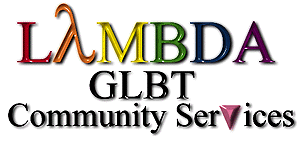

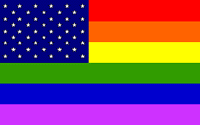 The flag quickly caught on like
wildfire in cities across the country. It was even
officially recognized by the International Congress of
Flag Makers. In 1989 the flag was given international
recognition when West Hollywood resident John Stout
successfully sued his landlords after they tried to
prohibit him from hanging the flag from his apartment
balcony. At New York's Stonewall 25 Parade in 1994, a
gigantic 30-foot wide, one mile long rainbow flag was
carried through the parade route by over 10,000
volunteers.
The flag quickly caught on like
wildfire in cities across the country. It was even
officially recognized by the International Congress of
Flag Makers. In 1989 the flag was given international
recognition when West Hollywood resident John Stout
successfully sued his landlords after they tried to
prohibit him from hanging the flag from his apartment
balcony. At New York's Stonewall 25 Parade in 1994, a
gigantic 30-foot wide, one mile long rainbow flag was
carried through the parade route by over 10,000
volunteers.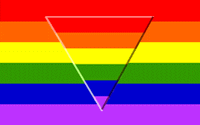
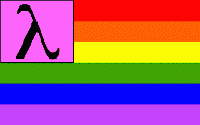 people in the gay community took offense to
this- they didn't want people to feel that they were
pitiable and in need of charity. But movements cannot
exist on spirit alone, so many organizations took to this
occurrence with enthusiasm and the practice continues to
this day.
people in the gay community took offense to
this- they didn't want people to feel that they were
pitiable and in need of charity. But movements cannot
exist on spirit alone, so many organizations took to this
occurrence with enthusiasm and the practice continues to
this day.

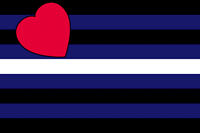
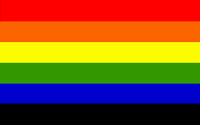


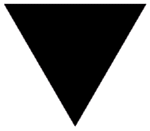


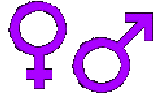
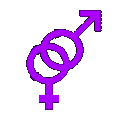
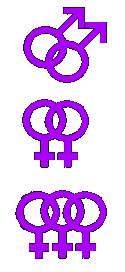
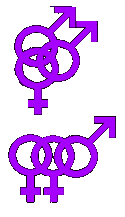
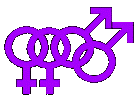

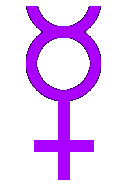
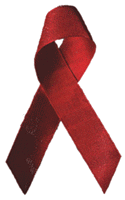 have
died of AIDS. Visual AIDS not only encourages art
organizations, galleries, museums, and other AIDS
organizations to commemorate those who have died of AIDS,
but also to educate the public about the transmission of
AIDS and HIV and the needs of those living with AIDS.
It's raises funds for research and treatment of AIDS.
have
died of AIDS. Visual AIDS not only encourages art
organizations, galleries, museums, and other AIDS
organizations to commemorate those who have died of AIDS,
but also to educate the public about the transmission of
AIDS and HIV and the needs of those living with AIDS.
It's raises funds for research and treatment of AIDS.
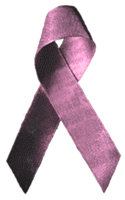
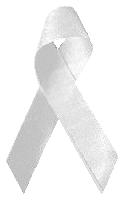
 between more than two people.
This is hardly a new concept. Many religions and
countries recognize and support such unions (historically
though, it has been one man having multiple wives).
between more than two people.
This is hardly a new concept. Many religions and
countries recognize and support such unions (historically
though, it has been one man having multiple wives).
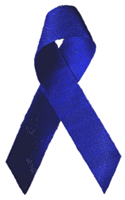
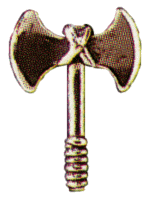 labrys is believed to have been
created over 8,000 years ago. It was favored by tribes of
female Amazons that roamed the area around what is now
Kazakstan in central Asia. It has also been linked to the
early town of Catal Huyuk in what is now Turkey around 6,000
BCE as a tool for clearing ground. Catal Huyuk was a
peaceful town which worshipped the Earth goddess and
prospered without conflict for 1,500 years.
labrys is believed to have been
created over 8,000 years ago. It was favored by tribes of
female Amazons that roamed the area around what is now
Kazakstan in central Asia. It has also been linked to the
early town of Catal Huyuk in what is now Turkey around 6,000
BCE as a tool for clearing ground. Catal Huyuk was a
peaceful town which worshipped the Earth goddess and
prospered without conflict for 1,500 years.  symbol the following year to use on promotional
material. The Australian Bisexual Network adopted it
shortly after as a national symbol to represent both the
Network and bisexuality. The SABN has since disbanded and
was replaced by first the Adelaide Bisexual Collective
and later the Adelaide Bisexual Support Group.
symbol the following year to use on promotional
material. The Australian Bisexual Network adopted it
shortly after as a national symbol to represent both the
Network and bisexuality. The SABN has since disbanded and
was replaced by first the Adelaide Bisexual Collective
and later the Adelaide Bisexual Support Group. 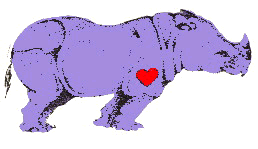 two Boston gay rights activists: one source
names Bernie Toal and Tom Morganti, another says it was
Bernie Toal and Daniel Thaxton. The entire campaign was
intended to bring gay issues further into public view.
The rhino started being displayed in subways in Boston,
but since the creators didn't qualify for a public
service advertising rate, the campaign soon became too
expensive for the activists to handle. The ads
disappeared, and the rhino never caught on anywhere else.
two Boston gay rights activists: one source
names Bernie Toal and Tom Morganti, another says it was
Bernie Toal and Daniel Thaxton. The entire campaign was
intended to bring gay issues further into public view.
The rhino started being displayed in subways in Boston,
but since the creators didn't qualify for a public
service advertising rate, the campaign soon became too
expensive for the activists to handle. The ads
disappeared, and the rhino never caught on anywhere else.